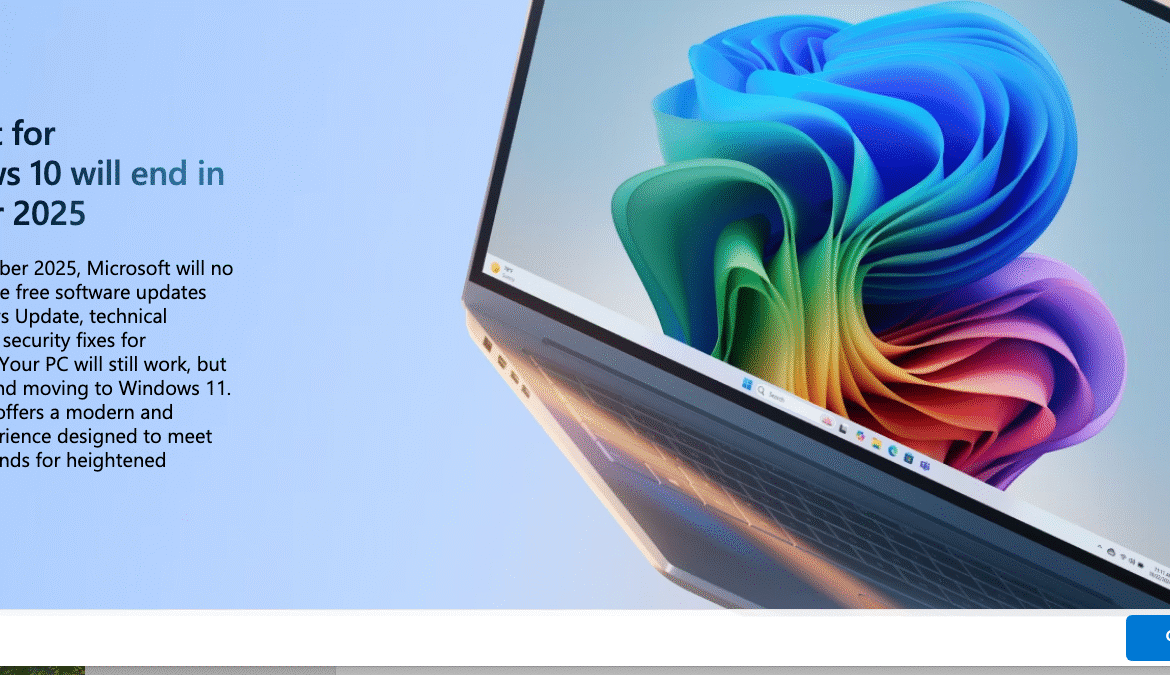We’ve been getting a lot of questions lately about Windows 11 and those scary messages about “unsupported CPUs” or “missing TPM 2.0 chips.”
Let’s clear this up.
Windows 10 support ends October 14, 2025.
After that, Microsoft stops providing free security updates. That doesn’t mean your computer stops working — it just means it becomes more vulnerable over time.
Now, here’s the interesting part: if your PC ran Windows 10 smoothly, it can almost certainly handle Windows 11 from a performance standpoint. The problem isn’t speed — it’s that Microsoft drew a line based on hardware security features, not horsepower.
Why your “unsupported” CPU probably still has life in it
When Microsoft built Windows 11, they tightened the official compatibility list to newer processors and required something called TPM 2.0 (Trusted Platform Module). TPM helps with encryption and secure boot, but it’s a software check, not a physical barrier.
That’s why a five- or six-year-old machine that still runs beautifully gets flagged as “unsupported.”
It’s not that it can’t do the job — it’s that Microsoft wants to guarantee certain protections for enterprise systems and minimize driver issues on brand-new hardware.
In other words, “unsupported” doesn’t mean “incapable.”
What the bypass really is
The bypass is simply a way to install Windows 11 without those hardware checks stopping you. Microsoft themselves document it — they just make it clear you’re on your own afterward. Unsupported systems might miss certain updates down the road, and you won’t get warranty help from the manufacturer.
That’s why we handle bypass installs carefully: we back up the system, verify that TPM isn’t just disabled in the BIOS, and walk you through what to expect before touching a thing.
When it makes sense
If your computer is still fast, reliable, and doing everything you need, a bypass can be a great bridge — especially if you’d like to get a couple more years out of your hardware before replacing it.
We’ve helped plenty of customers upgrade older machines to Windows 11 this way. In most cases, they notice better performance than before, thanks to Windows 11’s newer power-management and memory-handling improvements.
It’s just about going in with eyes open — knowing what’s supported, what’s not, and how to protect your data along the way.
What to do next
If you’re unsure whether your PC can handle Windows 11, or whether the bypass makes sense for your situation, let’s take a look together.
You can:
- Call us at 180064330508
- Email help@repairfactory.ca
- Or start a quick check at https://repairfactory.ca/start-a-repair
We’ll tell you straight: whether your CPU is worth keeping, whether there’s a safe path to Windows 11, or whether you’re better off with extended support for now. No jargon, no pressure — just clear answers.


